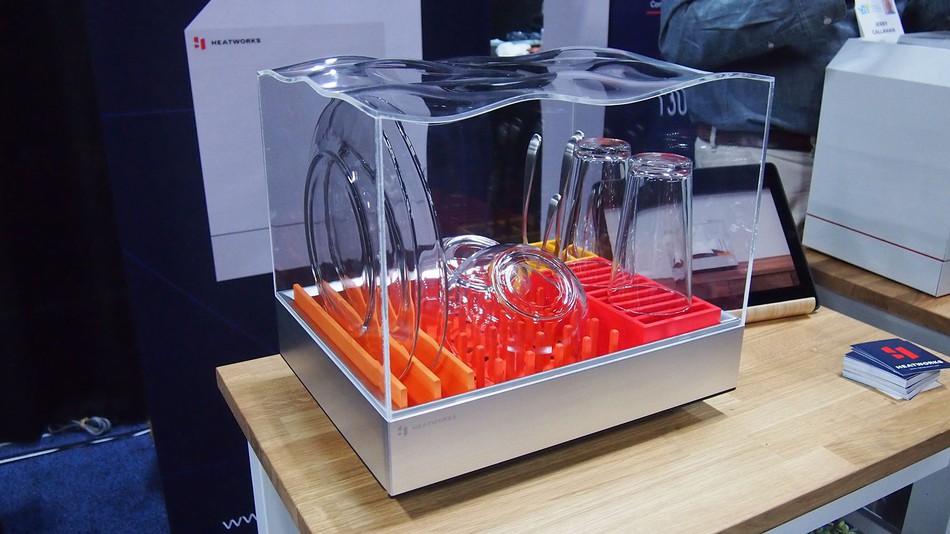
Space is a precious commodity in dense urban areas like New York City where small studio apartments are the norm. Unfortunately, that means there’s not usually much room for household luxuries like dishwashers.
Fret not, however, as Heatworks has a multi-purpose solution to your dishwashing needs.
Tetra is a connected countertop dishwasher (remember, everything is connected these days) on display at CES this week. The appliance, built in collaboration with global design firm frog, doesn’t require plumbing to operate, just a standard electrical outlet.
According to the company, the kitchen assistant can clean two full place settings (including plates, bowls, cups and flatware) or 10 plates or 12 pint glasses – all in 10 minutes. Water is loaded by hand so you know exactly how much is being consumed (about half a gallon per load) and there’s even an internal detergent reservoir that lasts dozens of cycles.
Rather than traditional heating elements, the unit relies on patented Ohmic Array Technology that uses graphite electrodes and advanced electronic controls to excite the naturally occurring minerals in water. This allows for more precision over the unit’s temperature and opens it up to multiple uses.
For example, Heatworks says you can use Tetra to easily sanitize baby products, wash plastic storage containers without melting them, cook seafood and even clean fruit. Talk about multi-purpose.
Tetra is scheduled to arrive in late 2018 priced at $300.
Lead image courtesy Michael Nunez, Mashable
https://www.techspot.com/news/72735-connected-countertop-dishwasher-can-wash-dishes-cook-dinner.html
